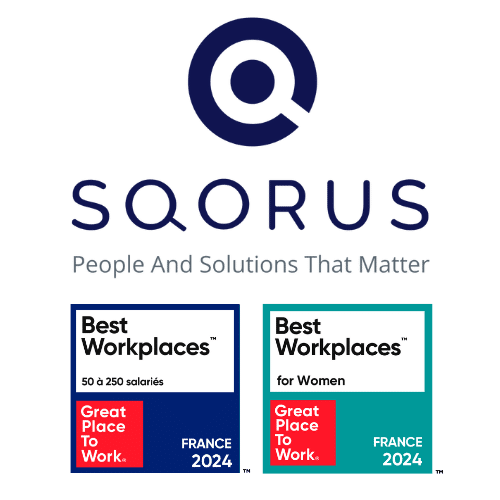Digital transformation has influenced the field of human resources. HR data is a pillar in the implementation of the company’s strategy. Processing the data collected by HR teams feeds into reflections on the organization of the structure and internal mobility.
The HR function encompasses the exploration of development opportunities by clarifying grey areas in order to optimize management.
Strategic issues for companies: what role does HR data play?
HR data plays a decisive role in predicting the challenges of corporate strategy. It allows you to anticipate changes in order to make appropriate decisions. To optimize the management of collected data, please pay attention to the following points.
Aligning HR data with the company’s strategic challenges
HR data analysis plays an active part in the strategic decisions taken for the future of the company: selection, processing and use of the data collected.
The HR function consists in unifying data to maximize the volume of information in order to optimize organization and internal mobility within the company.
The balance between the use of technology and the development of human skills
Data processing provides information on HR strategy, generating a global vision of skills to detect the evolution of internal mobility and encourage training. To address other issues, such as absenteeism or promotions, only Data should be taken into account. The commitment of employees is essential. The HR function therefore needs to strike a balance between the trends resulting from data analysis and employee involvement.
The commitment of employees
Involving employees in the data-driven approach requires awareness-raising and active participation right from the start of the company’s strategy project.
By familiarizing employees with data-driven processes and soliciting their collaboration in setting up indicators, they become players in the process.
Communicating the benefits of data-driven management can reassure employees that the actions proposed to them are worthwhile.
Analysis of HR data with respect for the privacy of employees
Human resources managers are faced with the risks associated with handling confidential data (HR teams, employees). The role of HR managers is to protect the data collection and processing system. This includes the anonymization of information to respect the privacy of employees and the prevention of spyware intrusions. The aim is to protect human and technological assets by ensuring the security of confidential information.
Should HR data be put at the center of the organization?
Once the importance of data has been identified, it is necessary to determine the place of data in the organization. The reliability and relevance of the data must include the environmental context to optimize the organization. The information will be linked to a specific professional situation and put into perspective with all departments (accounting, marketing, finance…). A global vision optimizes data management and interpretation.
HR Analytics: what are the benefits for the company?
Big Data technologies make it possible to manage a lot of data. The HR function consists of understanding the organization, anticipating situations and defining appropriate strategies. HR analytics uses various descriptive or explanatory statistical analysis methods. They are used to describe the current situation and address various issues such as salary differences or HR organization (recruitment, internal mobility). Data processing information relates to various HR areas, as detailed below.
Resource planning
A detailed analysis of data over several years of activity reflects the evolution of the workforce in an employment sector or region. It allows for improved projection and resource planning. Employee performance indicators are used to anticipate productivity targets by forecasting the resources needed by business line. The HR function needs to identify the data needed to address a specific issue (e.g., predicting future skills requirements).
Employee Recruitment
Performance acquisition software simplifies employee recruitment. They allow you to centralize candidate profiles and measure their performance. This increases the quality of recruitment and reduces operating costs. By combining performance indicators and employee skills data, an internal staffing map emerges. This helps to achieve precise results in anticipating recruitment needs.
Talent management
With the help of calibration tools, analytics can balance the talent management process. A clear view of the situation enables employees’ performance to be compared with their development potential. Thus, companies can plan coaching for employees who wish to develop their potential. Internal mobility tools can be used to visualize internal positions that need to be refilled, and to measure the differences between the profile and the skills required to perform a new function.
Retention of personnel
HR Analytics identifies the factors that influence employee engagement by conducting regular surveys. These operations help identify the needs of employees, offer them opportunities for skills development or a salary increase to prevent them from leaving the company. Big Data is useful for analyzing the results of surveys conducted by targeted questions. The analysis of data is simplified and the monitoring of the general climate of the company allows a quick implementation of the necessary actions.
How can you optimize your HR data?
Optimize your HR strategy with the most effective management tools on the market, and give your company a head start.
Also read in our "HR Data" feature:
- Aligning HR data with the company's strategic challenges
- HR experts: making the most of performance indicators with your data
- Strategic Workforce Planning: what are the challenges for organisations?
- People analytics: data for recruitment
- Workforce analytics for career management
- Attrition, detection of high potentials, HR onboarding: concrete cases of HR data use
- A unique HRIS software to boost the potential of your HR data
- RGPD and HR data: good practices
- How to develop a data driven culture?
Contact
A project? A request?A question?
Contact us today and find out how we can work together to make your company’s digital future a reality.













